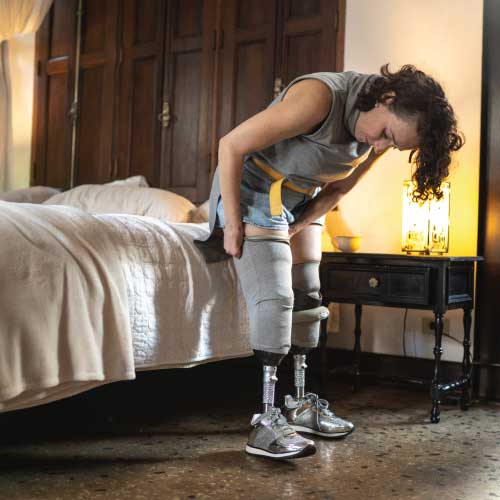Experimental Robotic Leg Helps Veteran 'Feel' Missing Foot
After an amputation, most lower-limb amputees take a while to get used to walking on a prosthesis without feeling the prosthetic foot strike the ground. This experience can be disconcerting and even discouraging.

Researchers at Massachusetts Institute of Technology and Case Western University, in conjunction with Cleveland VA, have been experimenting with a brain-controlled prosthetic foot. They tapped John Wade, a veteran receiving care at Cleveland VA, to test the technology. Wade served from 1991-1998 and again from 2004-2012.
In August 2018, Wade lost his left leg below the knee after the brakes failed on the semi he was driving. He regained consciousness seven weeks later and discovered he was missing a part of his leg. This led Wade to attempt suicide four times, but he has since decided to practice self-love.
Right when Wade decided that he needed to be busy living, he was interviewed by a researcher in Cleveland VA. The researcher was developing an experimental surgery for amputees.
In November 2022, Wade was implanted with 64 electrodes in his left thigh. The researchers hoped the electrodes would pick up Wade's brain's electrical signals for foot movement.
Then in February 2023, he tested a prototype that plugs into the electrodes. During that test, Wade felt his foot hitting the ground as he walked—the first in five years since his amputation.
In an interview with VA News, Wade said that moment brought tears to the eyes of everyone in the room. He also said that the experience allowed his brain to remember the feeling of walking normally again.
Another benefit of this experimental prosthesis was relief from Wade's debilitating phantom limb pain. This phenomenon can be explained by the dominant theory for phantom limb pain—stochastic entanglement theory. The theory states that phantom pain is caused by the neural circuits that process sensory input and produce motor output. When a limb is amputated, some of these neural circuits lose their role, which makes them prone to entanglement with other neural networks, like the one for pain perception.
Because the experimental robotic leg connects the prosthetic foot to the nerves through electrodes, these neural circuits can fulfill their role again, resulting in phantom limb pain relief.
While VA researchers were developing Wade's robotic leg, he participated in various activities, including the National Disabled Veterans Winter Sports Clinic at Snowmass, Colorado. During this event, he tested another prosthesis—a G-3 Infinity Knee, designed for adaptive sports like skiing.
Opportunities like these continue to lift Wade's spirit, allowing him to live his life fully.











































































